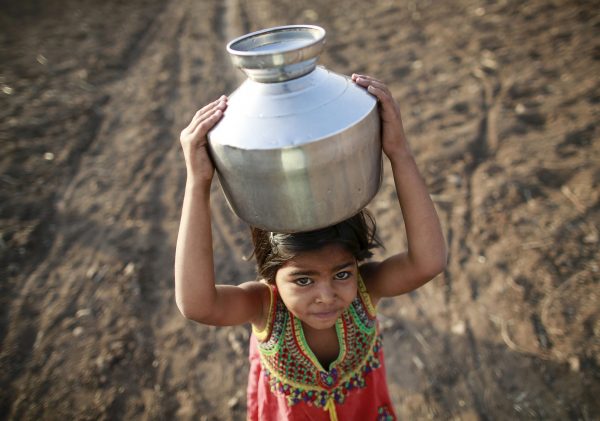If current trends continue, in 20 years an estimated 60 per cent of all India’s aquifers will be at critical or over-exploited levels. India could experience a drop of 6 per cent in its GDP due to water scarcity alone.
These statistics are alarming, but they do not reveal the full picture. If rain every year recharges aquifers, what does ‘running out of groundwater’ mean? Here is one way to understand this: imagine a person who inherits a trust fund when he turns 18 but also earns a small steady income as an artist. For the first few years, the wealthy artist can live well beyond his income by dipping into the trust fund. But once it is gone, he must live off whatever he earns. Likewise, once an aquifer gets depleted, the population must learn to live within the rainfall received. There is no buffer left.
To complicate matters, groundwater and surface water are linked. India’s monsoonal climate means it only rains a few months each year. Perennial rivers only exist because of ‘baseflows’ from aquifers in the dry season. Declining groundwater results in drying rivers in the months when water is most critically needed. But because groundwater moves slowly, it can take years or decades for the problem to manifest.
There are no easy solutions. Over-extraction of groundwater is driven by India’s policy of providing free electricity to farmers and changing this is tantamount to political suicide. In the absence of controls on abstraction, the government’s focus has been on supply-side interventions via rainwater harvesting structures like check dams and field bunds. But artificial recharge does not create new water. Any water that recharges groundwater is water that does not flow downstream. While upstream farmers gain access to more water, this occurs at the expense of downstream flow.
The amount of water in a scarce river basin is limited by the quantum of annual rainfall. So the problem is not about running out but rather about how a fixed resource should be allocated. Unfortunately, there is no ‘correct formula’ to determine who should get how much and there is no mechanism or platform to bring different stakeholders together to negotiate. The result of this governance vacuum is that the rich and powerful are able to capture this resource. As a result, the poor and future generations will suffer.
As aquifers dry up, many farmers are forced out of farming. Some farmers have been able to switch livelihoods to non-farm occupations, but those that cannot do so often struggle.
While farmers can access the underground water table through drilling, it is an expensive affair. As the water table drops, only the rich will have access to the required capital to drill deeper. In most states electricity is free and water-intensive crops like sugarcane and paddy are subsidised in various ways. As a result, the productivity of water in Indian agriculture remains low.
In the case of surface water supply from dams, cities benefit at the expense of farmers. Under Indian law, ‘drinking water’ is prioritised over all other uses. In practice, however, drinking water is simply urban water, which includes commercial and industrial uses. In a drought year, although water to farmers is cut back, water to cities (and industries) is not.
India needs to think of groundwater as a collective trust fund. In a normal year, India should only depend on annual renewable water resources. Groundwater should only be dipped into during emergencies in dry periods and then allowed to replenish in wet periods. Aquifers must also be protected from pollution so the water is safe and usable.
There is an irrational belief that technology will solve everything by improving efficiency. But technology merely creates new ways of storing, abstracting and using water without addressing the underlying problem — more than the renewable fraction of water is being taken out. Over-extraction of water for efficient use is still over-extraction.
India needs better data and more transparency on how much water it has, its quality and how much is being used by whom. New technologies, sensors and satellite imagery are making this possible to improve ‘water accounting’.
India also needs improved governance systems and an educated civil society that can demand more sustainable and equitable management of water. Investing in water governance is inherently political, slow and messy. Yet without creating institutions that create spaces to negotiate and allocate who gets how much in a fair and transparent way, India’s water future will likely remain bleak.
Dr Veena Srinivasan is a Fellow at the Ashoka Trust for Research in Ecology and Environment, Bengaluru, India.


Your point that ‘artificial recharge does not create new water and that any water that is recharged does not flow downstream’ is a very important aspect – and one that I think few people really understand. From this respect, any groundwater recharge must be accompanied by education programs to assist farmers to adjust their cropping patterns to not simply grow more because their borewells are full, but to practice economy of water use with crop changes – moving away from the water guzzling sugar cane and paddy to more traditional crops such as Jawa. Thank you for an insightful article